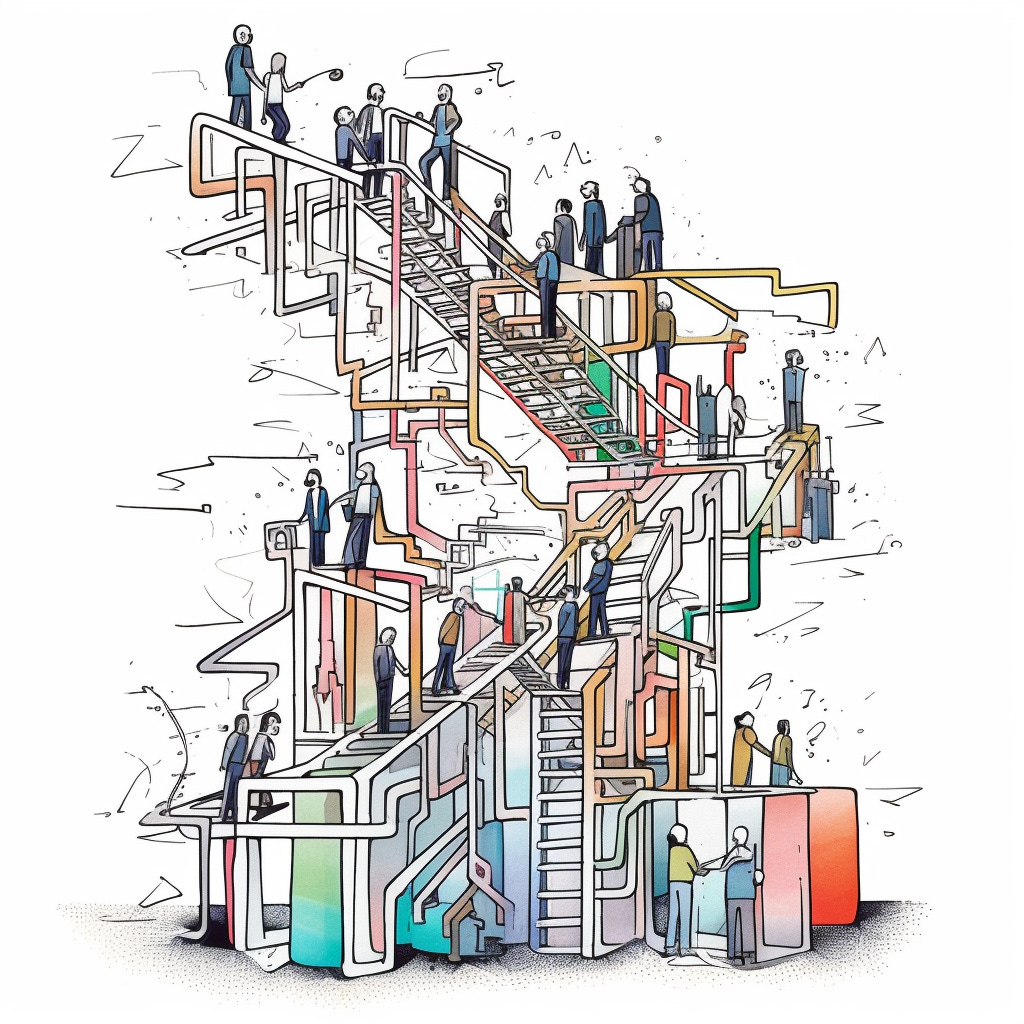Welcome back to the second episode of our "Day in the Life of" series! This week, we delve into the world of the manager of product management. We'll explore how this role differs from that of a product manager and the various responsibilities it entails.
As you may recall from last week’s post, the life of a product manager is filled with dynamic challenges, constantly evolving to meet the ever-changing needs of our customers and the business. However, the role of a manager of product management introduces a new layer of complexity and diversity into the mix.
A manager of product management plays a pivotal role in shaping the success of their team. While they may occasionally dive into the nitty-gritty details, their primary focus shifts towards creating an environment that fosters growth, collaboration, and innovation among their team members. Let's take a closer look at what this entails:
What are some of the things a manager of product management deals with?
1. Cultivating a Supportive Environment:
Creating manageable workloads for the team.
Fostering a culture of inclusion and community.
Providing transparent career development paths.
Implementing mentorship programs within the team to facilitate knowledge sharing and career development.
2. Guiding and Coaching:
Communicating a clear and compelling product vision to inspire the team and align their efforts.
Offering expert guidance in making efficient decisions.
Setting clear goals and pathways for career advancement.
Conducting regular performance reviews and providing constructive feedback for growth.
Establishing key performance metrics and regularly tracking and analyzing them to drive team improvement and productivity.
Encouraging a learning environment by allowing room for failure and growth.
Effectively resolving conflicts within the team and promoting a harmonious work environment.
Empowering team members to take ownership of their work and make decisions while providing guidance and support.
3. Collaboration and Communication:
Promoting effective collaboration with co-creators.
Ensuring consistency in communication across teams.
Providing constructive feedback and support.
Encouraging 1:1 meetings with different departments and fostering a better understanding of the overall business
Identifying and mitigating risks that could impact product development and delivery.
4. Leading by Example:
Being a role model for the team's positive work ethic.
Encouraging participation and input from all team members.
Promoting a culture of continuous improvement.
Be Positive and Be First in your conversations
Instilling a customer-centric mindset within the team and prioritizing customer feedback and needs.
Being prepared to handle crises or unexpected challenges that may arise in the product development process.
These responsibilities may also extend to:
Gathering Feedback: Collecting input from key co-creators on how the product management team can better serve their needs.
Pioneering New Approaches: Piloting innovative methods to enhance product development and collecting feedback for further improvements.
Career Pathing: Collaborating with other leaders to define clear career paths for team members and providing them with realistic guidance.
Ensuring Consistency: Maintaining consistency in how the product management team communicates and collaborates with co-creators.
Handling Challenges: Addressing issues within the team and providing fair assessments and coaching moments for growth.
Guide Don’t Take Over: For those new to the role of manager of product management, it's essential to remember that you're not the product manager. Your role is to support, guide, and create an environment where your team can flourish.
A Day in the Life of a Manager of Product Management
9 AM: Team Synchronization Our day kicks off with a team connect meeting. This meeting captures an opportunity for the manager to review some housekeeping notes around the business, updates from stakeholders outside of eCommerce, and general market updates. There is a lot of variability for the agenda in this meeting based on projects in flight, time of year, and business results.
10 AM: Strategic Roadmap Review Moving forward, it's time to map out our journey. We review the strategic roadmap, ensuring the team can align daily tasks with the broader vision and long-term goals. This is where we ensure that each step taken contributes to our product strategy and potentially asking the hard questions around the work coming up around feasibility and value through the strategic lens.
11 AM: Aligning with Stakeholders The manager of development, QA, and product are reviewing retro notes and qualitative progress made in their agile environment. They discuss a new process pilot around pointing stories for both unit tests and regression separately so they have better forecasting for upcoming releases.
12 PM: Lunch and Networking You get together with an old colleague that is now a Director of Product management at a different firm. You discuss approaches, but nothing confidential. You hear from him about the Product Protégé Guide and how it’s really improving his team’s effectiveness and his clarity as a leader for how capabilities come to life.
1 PM: Weekly Leadership Meeting With a weekly cadence, the agenda is really focused on the happenings of the previous week, any impediments to progress that your co-managers of product management can weigh in on along with your Director of Product. Any positive and negative colleague interactions that require discussion are brought up to ensure the managers have alignment on best next steps. Updates from across the business are discussed so it can be disseminated to the various product managers that may need to be in the know.
2 PM: Performance Metrics Check The manager of product management requested an update on 2 of the pitch decks that ended up being built and going live in production. The product managers present to the manager and 2 stakeholders from across the business that had interest in the learnings. The manager asks questions, adds commentary to support the product manager’s presentation, and also sets the vibe for the meeting that feedback is a gift. Separately the manager of product management is taking notes on how their team is telling a story, presenting their data, what data set and is it the right one, are they talking too much or do they have brevity, do they allow for feedback or go through it, is it a cohesive story?
3 PM: Customer Insights Readout Your product manager invited you to join in on read out of research being done on the customer. While you are excited to join, you realize that you are there to listen and monitor how your team is performing when qualitative data points are being revealed. Are they finding the trends? Are they asking the right questions? Do you see them starting to connect the dots on how the feedback of a problem relates to an item on the roadmap and how this could impact priority? Is there inclination of next steps with any of the feedback? The job here is to listen and ask questions but mostly observe your product manager to ensure they have the right mindset and framework when taking in customer insight feedback.
4 PM: Vendor Relations As the day progresses, we review requests for proposals (RFPs) for potential third-party vendors that your product manager wrote. You are looking to see if your product manager has ensured various perspectives from all stakeholders, gotten feedback from co-creators that would be impacted (IE technical needs from the lead developer), and did they structure the RFP in a way that is repeatable for other vendors. The hopeful outcome of this meeting is a few pointers to the product manager, but in some cases, the RFP would need serious work before it’s ready to go - and in this meeting you have to be reminded not to go in there and fix it yourself, but how do you question the product manager and give them coaching that they can use to then go fix the RFP themselves and set up another review.
5 PM: Update the VP In this meeting, you are managing up, focusing on key business updates, what is working, what is not working, and where you need support. The agenda should be focused on outcomes and not everything you are doing. In my career I heard some incredible advice to… “tell me what I need to know, not everything you know.” This is a moment to take this advice an make the most use of getting support from the VP as well as updating them.
I hope this glimpse into the manager of product management role provides valuable insights into the multifaceted world of tech leadership. What did I leave out? What other things should managers of product management plan on handling?
Stay tuned for more exciting episodes in our series!
Until next week!






